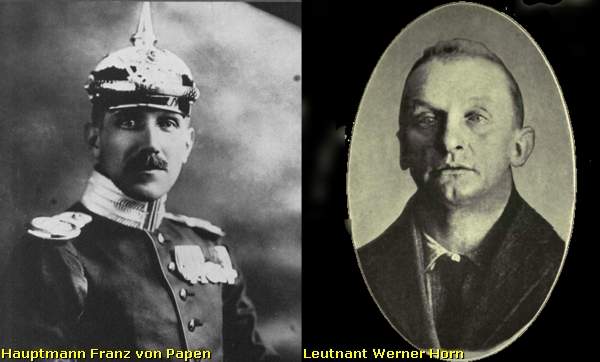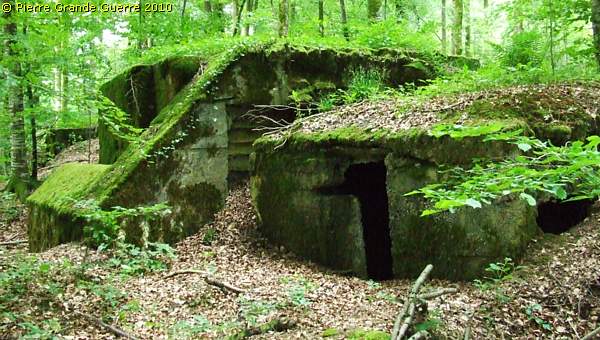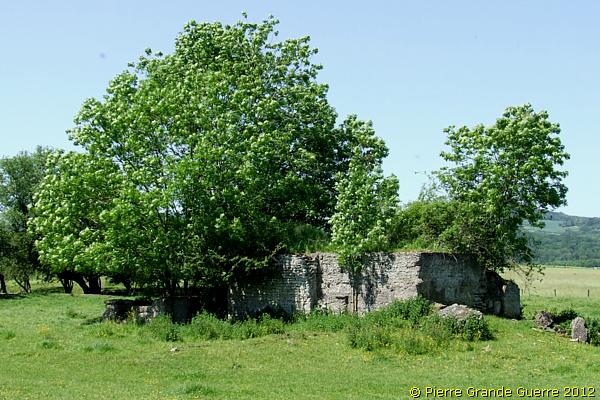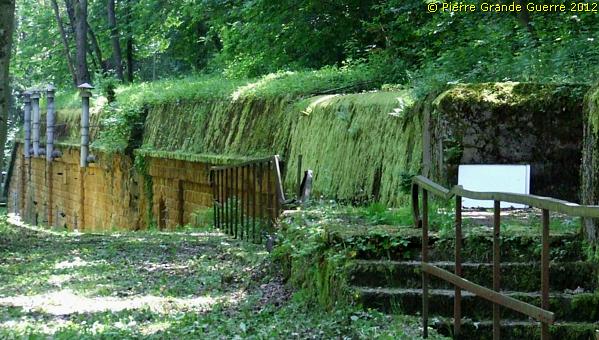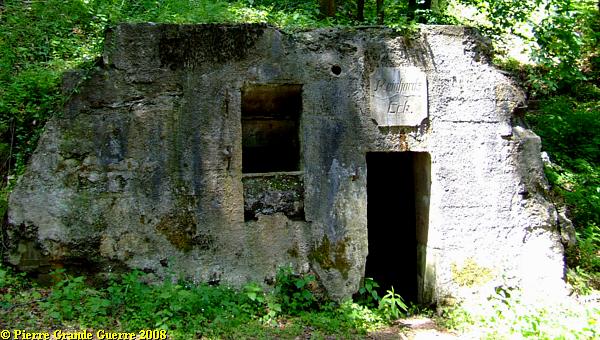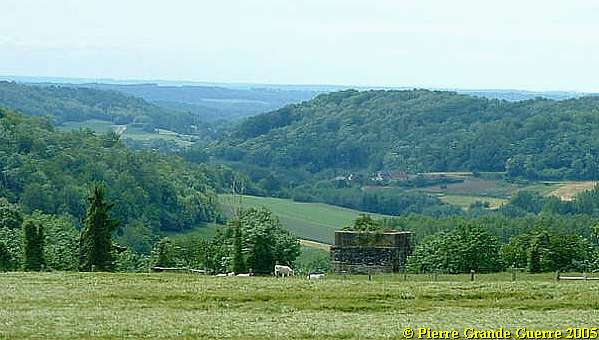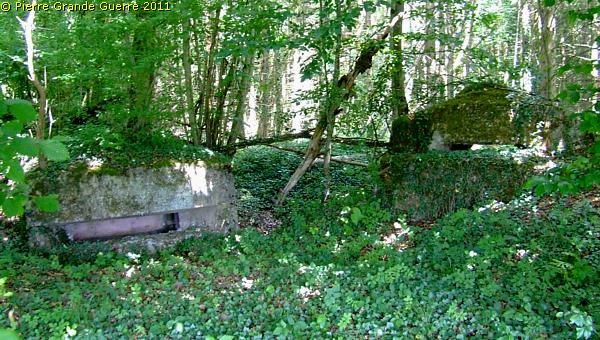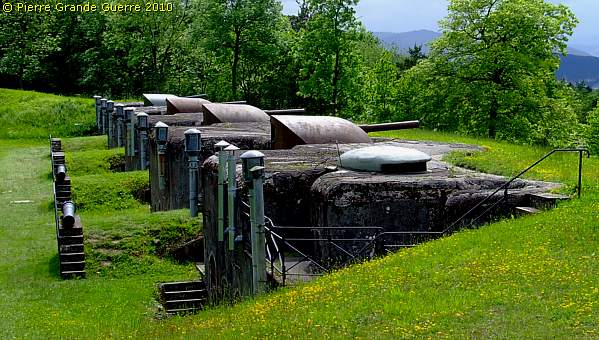VOSGES - Ban de Sapt - La Fontenelle
Year of visit: 2009
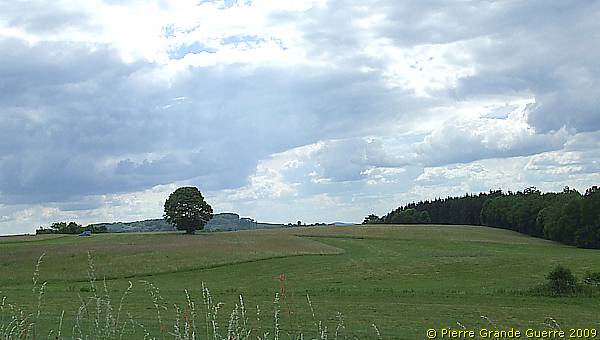
A visit to the Bavarian bunkers along the Col d'Hermanpaire and to the former battlefields around the hamlets of the Commune of Ban de Sapt: Launois, La Fontenelle, Laitre, and St. Jean d'Ormont.
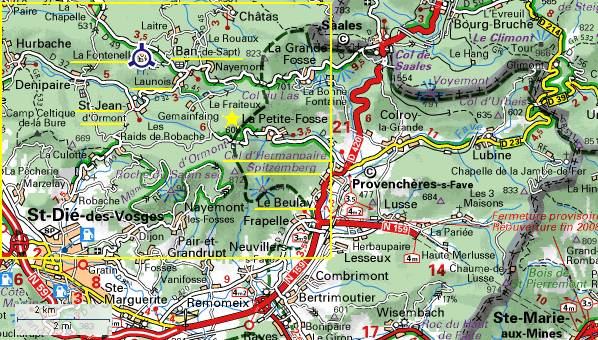
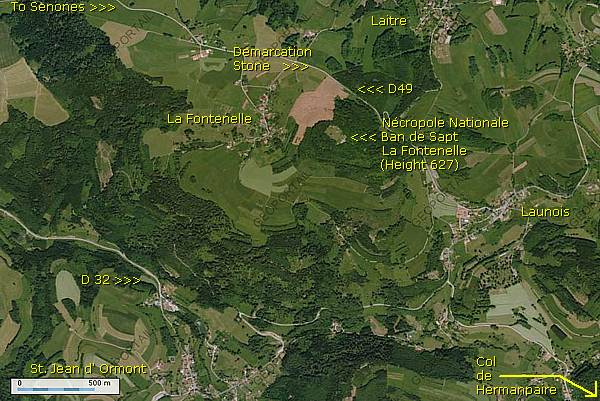
At the foot of the here invisible Spitzemberg, we start at a demarcation stone near Le Beulay.
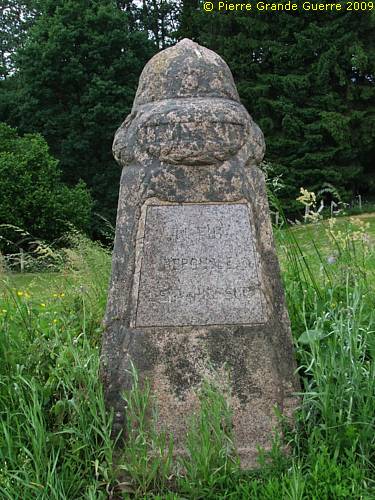
From Frapelle - Le Beulay, we follow the D 45 northward, via La Petite-Fosse, to visit the area of the Col d' Hermanpaire .

At the north side of the pass we detect some Bavarian bunkers.
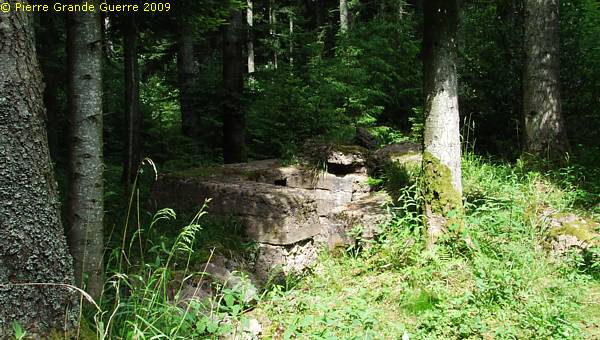
This double machine gun bunker controls the road.
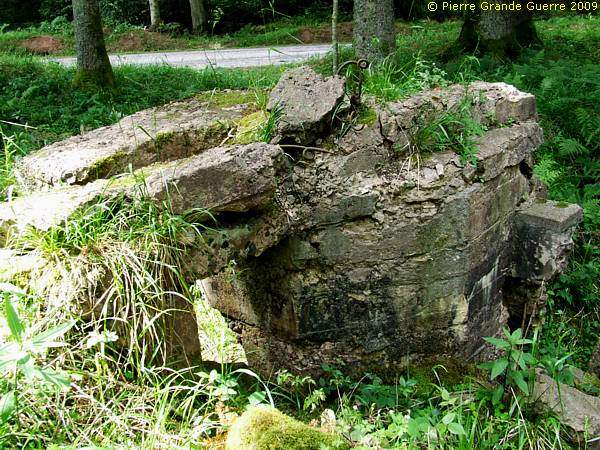
The two gun openings are hardly visible.
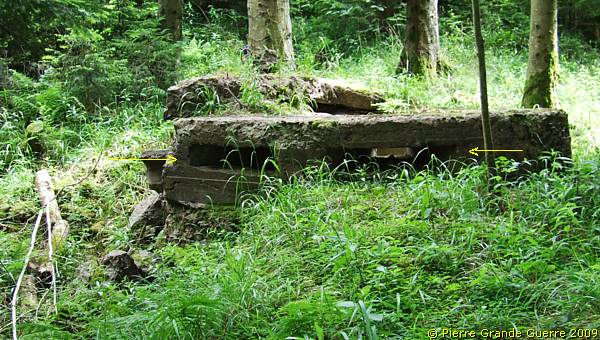
Col d'Hermanpaire and Ban de Sapt
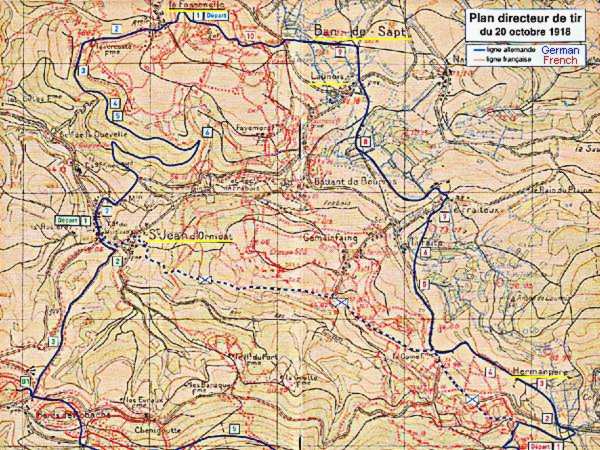
This French 1918 Trench Map offers some idea of the networks of trenches around the Col d' Hermanpaire and Ban de Sapt. (Red lines for French trenches and blue lines for German positions.)
Here, on both sides of the Col d' Hermanpaire, the Bavarian 39th Reserve Divison controlled this road over the pass, from Frapelles / Beulay to the valley of the Hure river and the valley of the Fave river, with trenches and bunkers.
The Col d' Hermanpaire was the territory of the Bavarian 39th Reserve Division. Their opponents were the French 210th Infantry Regiment (210e R.I).
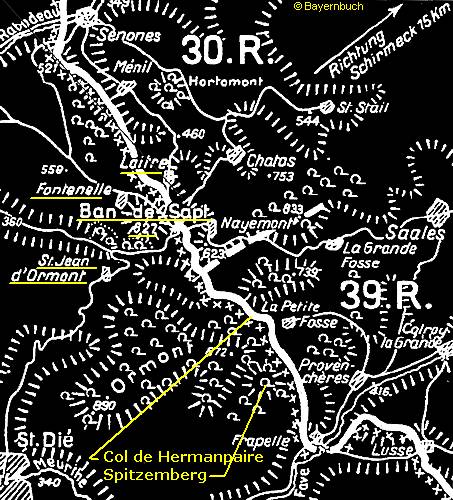
Together with the Bavarian 30th Reserve Division, in the north around Ban de Sapt, the 39th formed the army corps of General Magnus von Eberhardt, "Armee Korps Eberhardt".

Some 50 m. more to the north: another bunker with rifle holes.
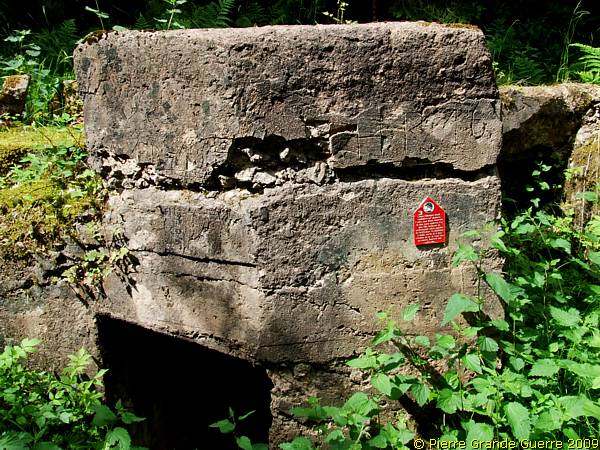
It is part of a bunker complex here, ...

... and it has been constructed in 1916.
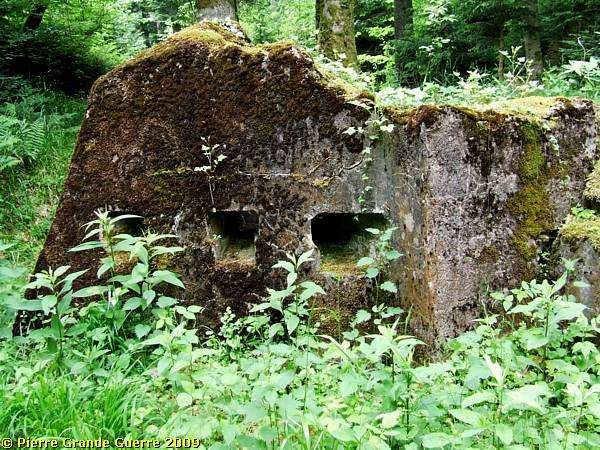
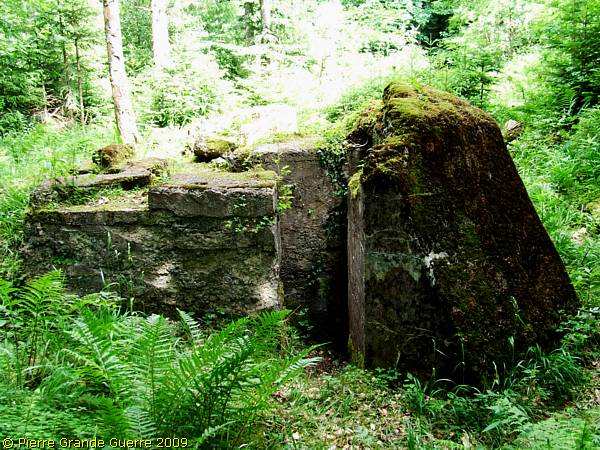
Inside the bunker.
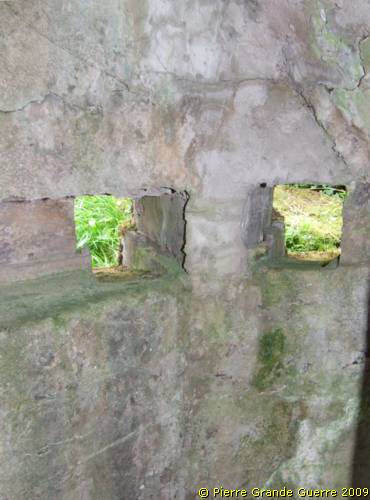
Bavarian concrete and sunken entrances to underground shelters.
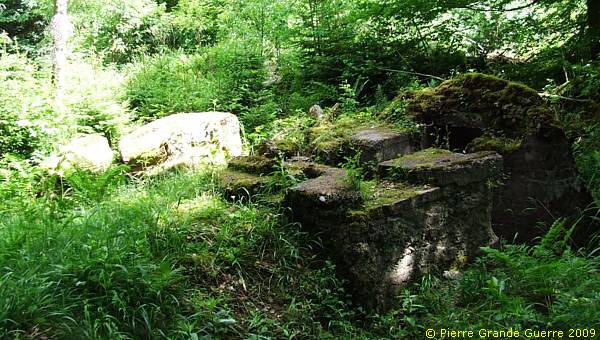
We follow a path north-west, along traces of trenches and shellholes.
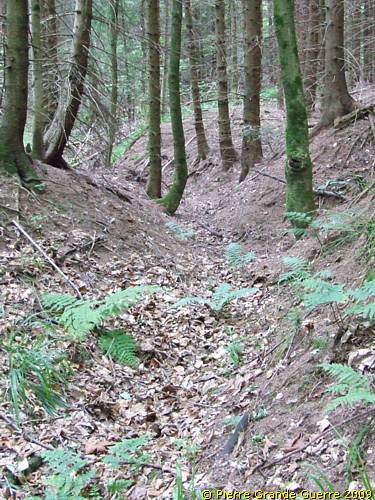
We pass the relics of the fortified ruines of a farm. Barbed wire poles with a pig tail shape of the period.
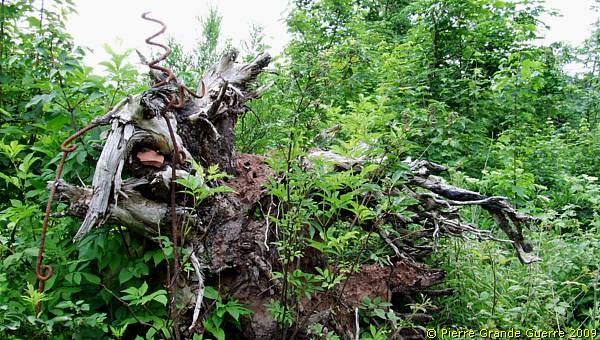
View from this spot south-west at the nearby Spitzemberg (841 m.) On 20 September 1914 at the end of the Battle of the Spitzemberg (17-25 September 1914) the French Red Devils of the 152e R.I. conquered the Spitzemberg. So, a view from the German front line to the French lines at the summit of the mountain.
( Dutch readers: In mijn boek " De Rode Duivels in de Vogezen - 1914-1915 " vertel ik in detail over deze veldslag om de Spitzemberg.)
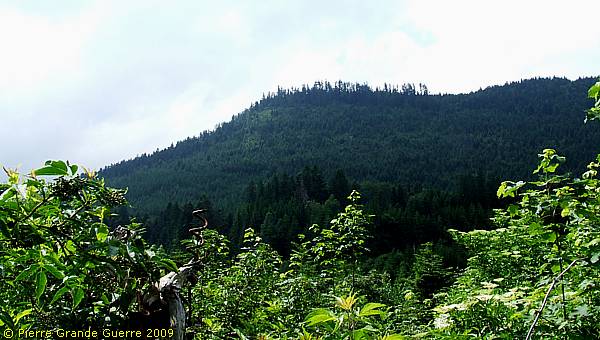
We go back to the Col itself to explore the south side of the road, D 45.
From the junction at the pass, along a dead end road southward, we detect this bunker guarding the road upward the Spitzemberg.
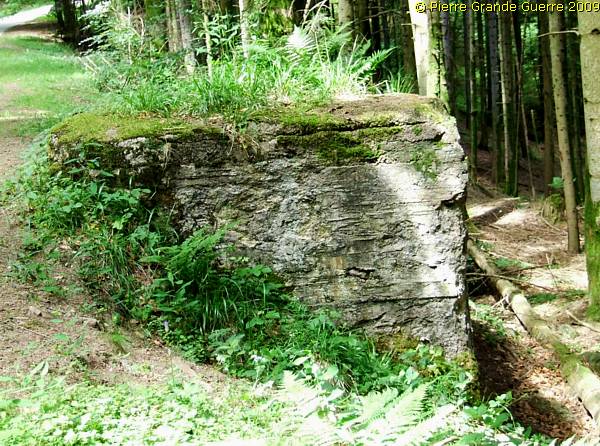
Three rifles holes guard the road, ...

... which lies at the east foot of the Tête de Raves.
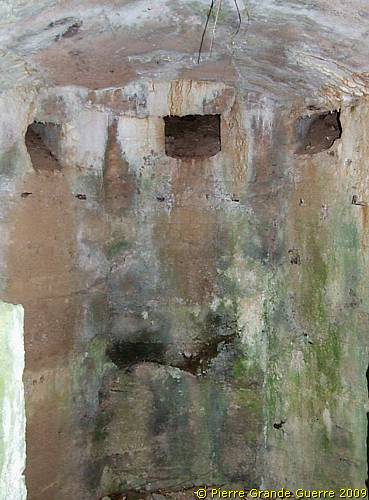
Into the wood following the lower slopes of the Tête de Raves.
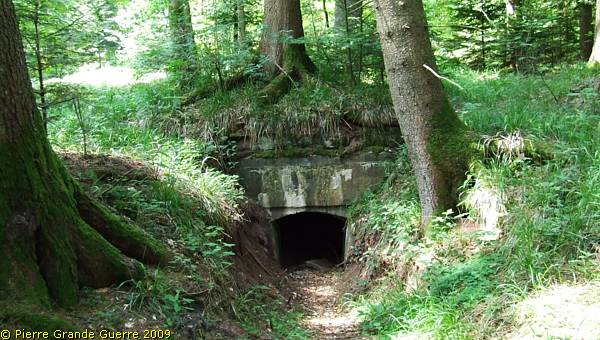
We follow a difficult path north, to find this Bavarian machine gun bunker, ...
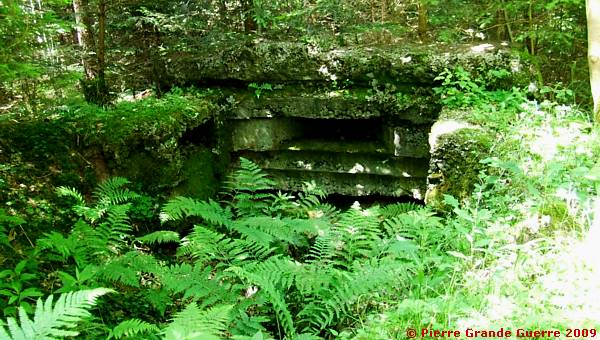
... with it's top blown off, fallen down at the other side of the path, some 5 m. away.
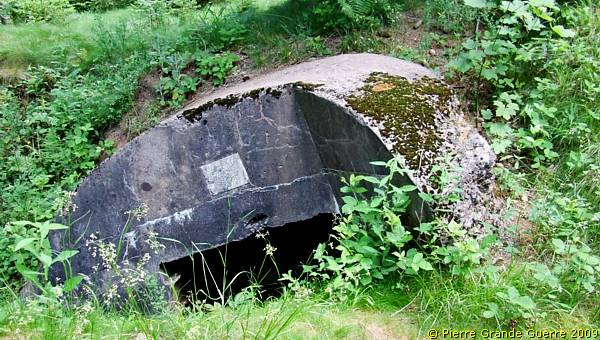
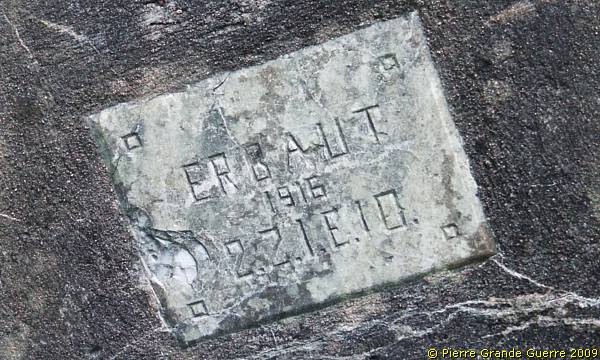
From the Col d'Hermanpaire we descend to the village of Launois.

Launois : View at the Tête de Raves (873m.) right at the horizon.
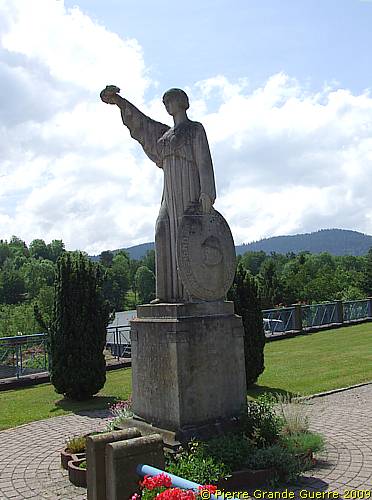
This Memorial for the Dead, a "Victorious France", stands in front of the Mairie, the Community Hall of the 7 hamlets of Ban de Sapt. The Germans occupied Launois until 24 July 1915. The front line used to run through the west edge of the village.
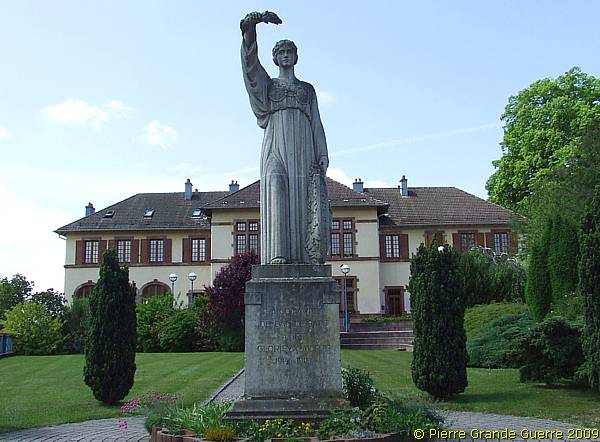
From Launois we continue to Côte 627 , Height 627, centrepoint of the battlefield of Ban de Sapt in 1914 and 1915. View from the hamlet of La Fontenelle at Height 627.
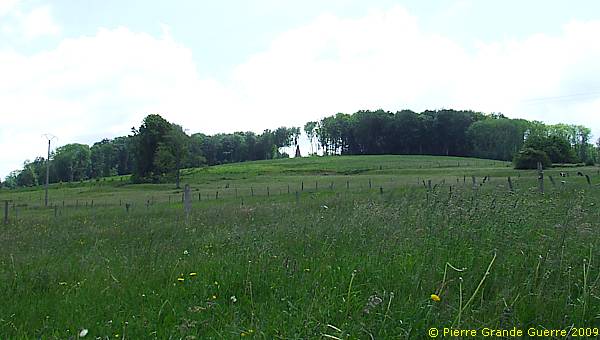
A concise history of the Battles of Ban de Sapt
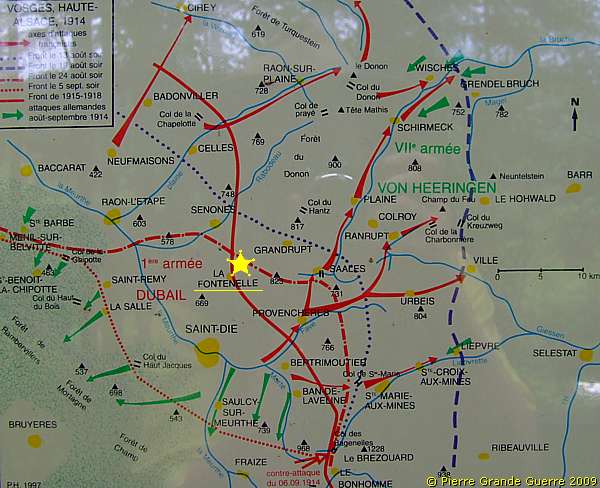
The French occupation of Height 627
On 10 September 1914 the Germans vacate St. Dié. The 30th Bavarian Reserve Division withdraws to the mountain passes along the French-German border. At 14 September the French 133rd Infantry Regiment (133e R.I.), a unit of the 41st Division occupies the village of La Fontenelle, at the foot of Côte 627 (Height 627). On the same day the 1st Bavarian Ersatz Brigade starts to install itself on Côte 627.
The next day, on the 15th, the French 23rd Infantry Regiment (23e R.I.), and the 133rd start to attack Côte 627. On 16 September these regiments, auxiliated by the 97e R.I. and by Chasseurs d'Afrique, conquer Côte 627 on the Bavarian 30th Reserve Division.
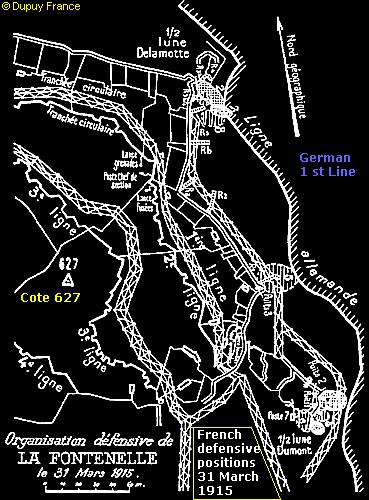
After follow up attacks during the next days on Fraiteux and Germanfaing, the offensive stops at 22 September. At 30 September 1914 Commandant (Major) Barberot of the 1st Battalion of the 133me R.I. and Capitaine Cassoly immediately start to design and construct extensive defensive positions of trenches and bunkers on Height 627.
Alternating turns the 23e R.I. and the 133e R.I. will together guard Côte 627.
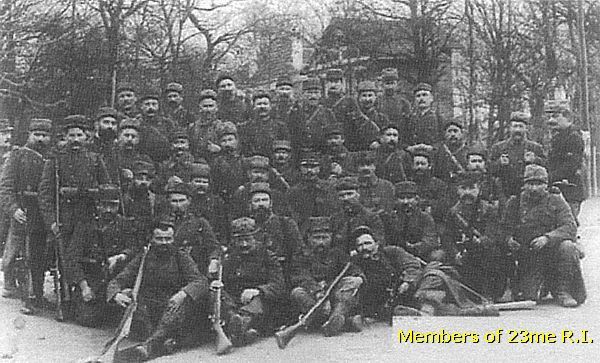
The Opponents
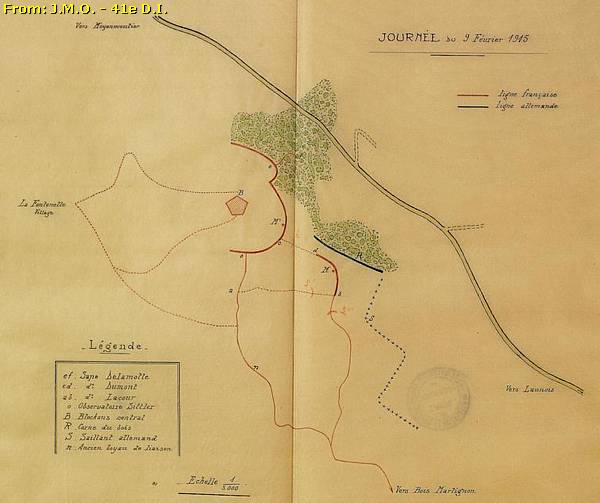
At the east foot of the height lies the Bavarian Reserve Infantry Regiment 11 (B.R.I.R. 11). The regiment forms together with the B.R.I.R. 14 the 10th Bavarian Reserve Brigade under command of Generalleutnant Müller. The 10th Bavarian Reserve Brigade and the 5th Bavarian "Ersatz Brigade" form together the 30th Reserve Division.
December 1914 - May 1915
In December 1914 the Bavarians started heavy artillery bombardments on the French positions.
On 27 January 1915 the 133e R.I. launches an attack at the edge of the Bois de Laitre. The attack is a complete failure. The 133e R.I. even loses it's chief, Lt. Colonel Dayet.
In April and May 1915 the Bavarians attack the Height several times with preceding mine explosions, even capturing a part of the French 1st line.
Mine Warfare around Côte 627
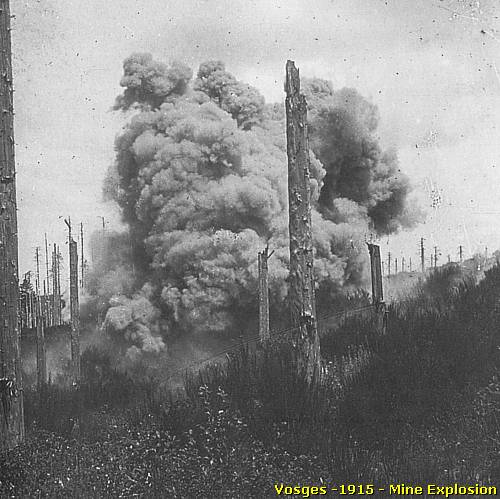
From 8 December the Germans start tunnelling. Hearing underground sounds the French start tunnelling also. These activities lead to a constant underground battle for the saps and tunnels. In February 1915 an extensive mine war breaks out, with tunnelling, underground fights, mining and countermining, and with sometimes even several explosions on the same day. This mine war will go on until June 1915.
22 June 1915: German attack and occupation of Côte 627
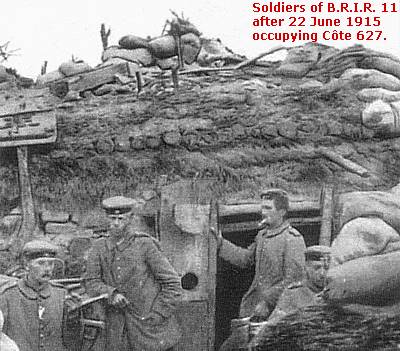
On 22 June 1915 the 23me R.I., on it's turn, is defending the height.
At 13.55 hrs, the Bavarians explode three mines at the same time. Exactly at 14.00 hrs. the artillery of the 30th Bavarian Reserve Division bombards the village of La Fontenelle and Côte 627. After the bombardment, at 17.30 hrs. the B.R.I.R. 11, assisted at the left flank by the B.R.I.R. 14, launches an infantry attack, using flame throwers, on the ruined French defensive positions on Côte 627. Around 21.00 hrs. the battalions of B.R.I.R. 11 reach all their targets.
Although General Claret de la Touche sends auxiliary troops, the 43e R.I.T., the 37e R.I.C., and the 357e R.I., this assistance, a counter attack lead by Lt. Colonel Sohier, is of no avail. The number of casualties of the French is huge. 23e R.I. for instance lost two thirds of his officers. B.R.I.R. 11 stays and starts to occupy and fortify Côte 627.
This French Army map sketches the German defensive positions.
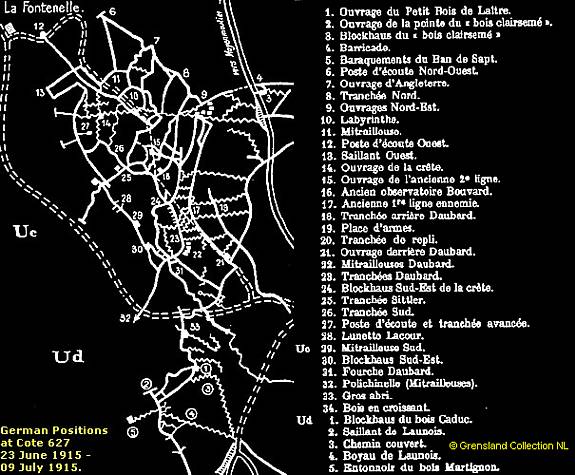
8 July 1915 - The 133e R.I. Retakes Côte 627
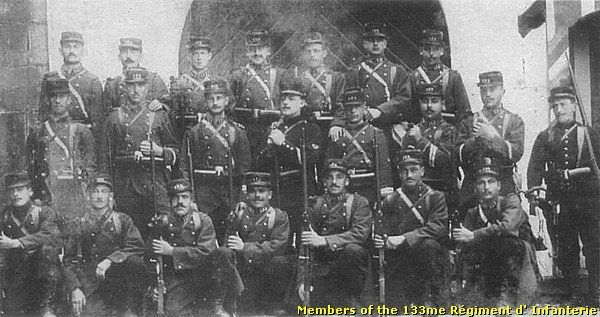
On 8 July 1915, at 15.15 hrs., the French start an artillery bombardment from the Col de Robache with 220 mm, 65 mm, 75 mm, and 120 mm guns, at the German positions at Height 627. Since 27 June 1915 the 2nd and 4th Bavarian Reserve Regiments of the 5th Bavarian Ersatz Brigade have relieved the Bavarian 10th Reserve Infantry Brigade. These regiments occupy the height on 8 July.

At 19.00 hrs. the 133e R.I., assisted by units of 357e R.I, 23e R.I., 6th Battalion Chasseurs Cycliste (bikers), and the 43e R.I.T., attacks with a pincers manoeuvre and a spear head in the middle the German positions. The 133e R.I. directs it's attacks also on the D 49, the road from Launois to La Chapelle and Moyenmoutiers.
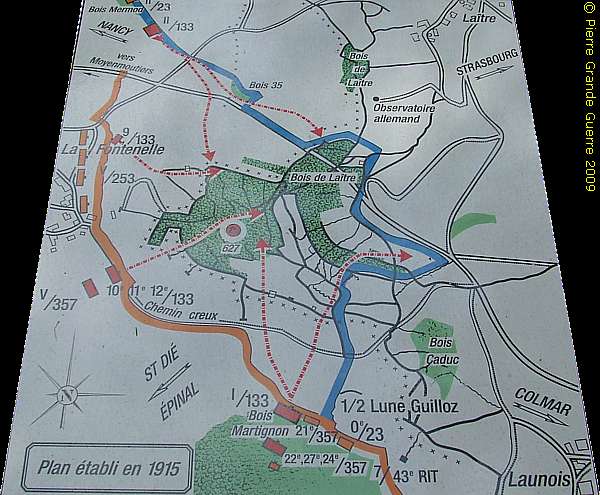
| This map, to be found on Côte 627, shows the attacks of 133e R.I. of 8 July 1915. The orange line symbolises the jump off line. The black lines and x-es represent the German lines. The red arrows stand for the routes of the French attacks. The blue line pictures the new frontline of 9 July 1915 and the area, which 133e R.I. conquered on B.R.I.R. 11. The front line crosses twice the D 49 and runs for a part parallel to it. |
16 July - Unsuccessful German Counterattacks
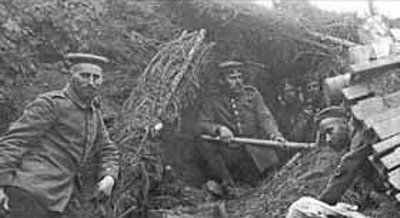
On 16 July, at 08.00 hrs, the Bavarians at their turn launch an artillery bombardment on the French positions, which will last until 20:00 hrs. It is the opening of a Bavarian counterattack at the Côte 627. Under command of Major Neumann, the Bavarian 5th Ersatz Brigade, assisted by 2 companies of B.R.I.R. 60, and 1 company of B.L.I.R. 80, attacks at 20.00 hrs. at 4 locations at once. The French defend themselves with trench mortars and machine guns.
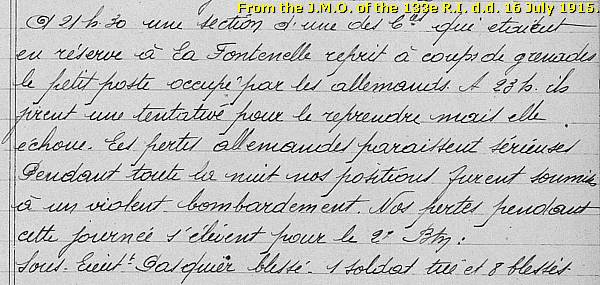
In the night of 17 July, at 2.30 hrs., the Bavarians, having lost more than 100 men and 4 officers, are forced to call off the operation. The French casualties count that day 29 men.
24 July - The French Final Offensive
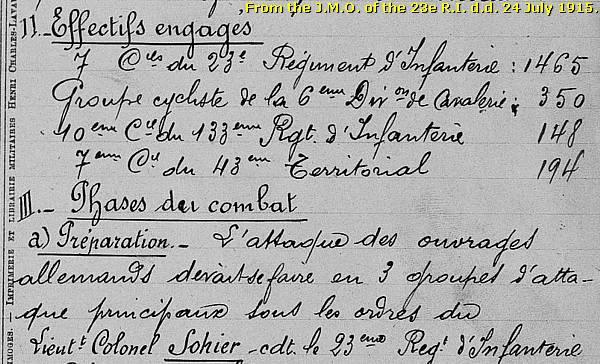
On 24 July Lt. Colonel Sohier commands an attack on the German positions in and around the village of Launois. The Germans had fortified three neighbouring houses at the west side of the village into a stronghold.
After a preceding artillery bombardment, which starts at 16.00 hrs., units of the 23e R.I. 133e R.I. , 43e R.I.T. , and of bikers of the Chasseurs Cycliste attack the village at 18.30 hrs. The Bavarians defend the village stubbornly with machine guns. At the end of the day the French manage to conquer the village.
The French take 836 Bavarians prisoner, belonging to the Bavarian Jäger Bataillon 8, Brigade Ersatz Bataillon 3, and B.R.I.R. 14. The French count 522 casualties, among them 106 soldiers killed and 3 officers.
August 1915: Stabilisation of the Front Line
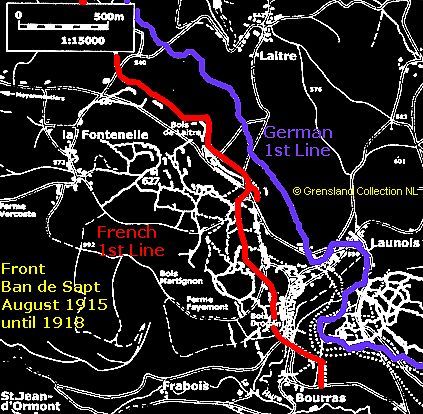
In spite of several German counter attacks in the last week of July 1915, the Ban de Sapt frontline would freeze almost in the situation of 25 July. When the fights were definitely petered out in August 1915, the frontline stabilised until November 1918. The troops on both sides concerned this front sector as a quite sector; the French controlling the D 49, the Germans occupying the north-east. The large battles may be over, but, "to keep the troops sharp", from times to times there were still night patrols, combats, and artillery bombardments going on.
2.240 French soldiers lost their lives at Ban de Sapt.
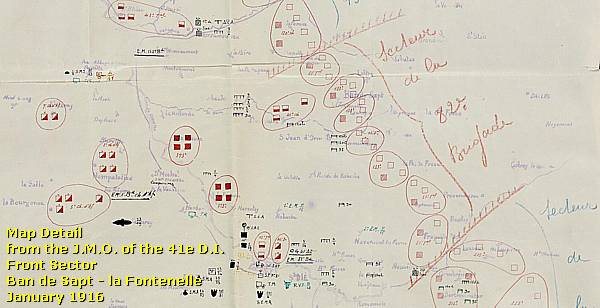
Main source: my friend, Aris de Bruijn, fellow member of the Dutch WFA and author of "The Battle for the Height of Ban de Sapt", co-author of the alas sold-out book, "The First World War in the Northern Vosges", published in the Dutch language in 2006 by the WFA-Nederland. (Original titles respectively: "De strijd om de hoogte van Ban de Sapt" and "De Eerste Wereldoorlog in de Noordelijke Vogezen"). www.grensland1418.nl .
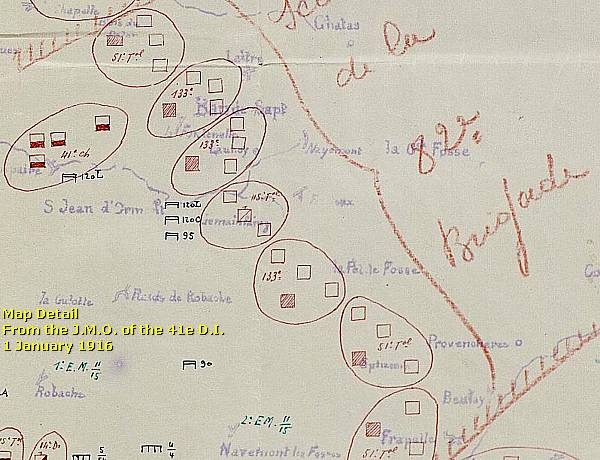
We arrive at Côte 627. At a spot some 50 m. east and in front of the cemetery, ...
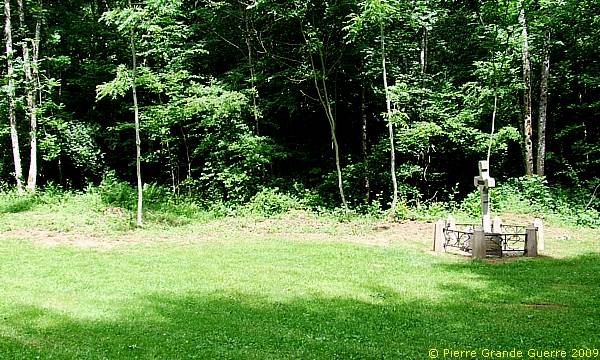
... stands this modest memorial to commemorate 2 officers of the 133e R.I., fallen on this spot on different days.
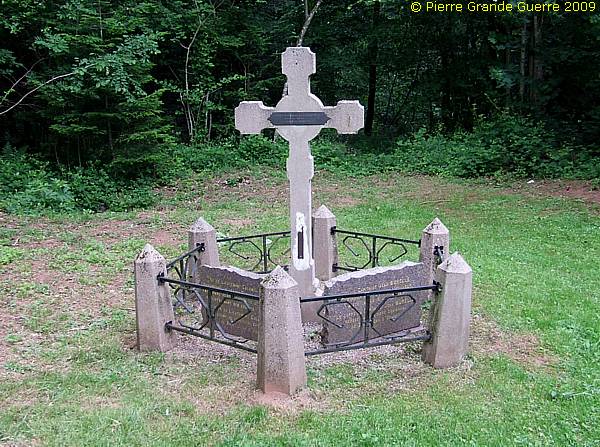
A memorial stone at the foot of the Crucifix tells us:
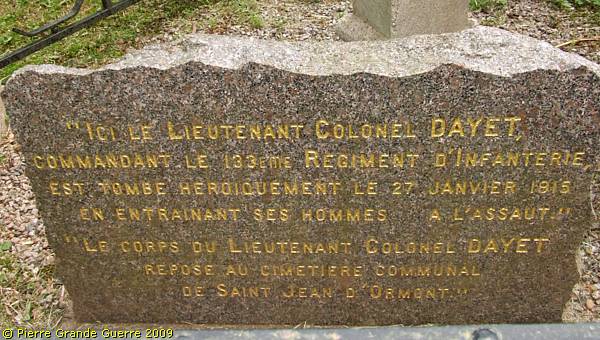
Lieuteant Colonel Emmanuel Paul Louis Alexandre Dayet
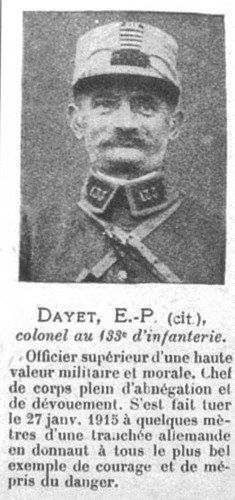
"E.P. Dayet (citation), colonel of the 133rd Infantry.
Superior officer of high military value and morale. Corps Chief full of self-denial and dedication. Was killed on 27 January 1915 at some few metres from a German trench offering the most beautiful example of courage and contempt of danger."
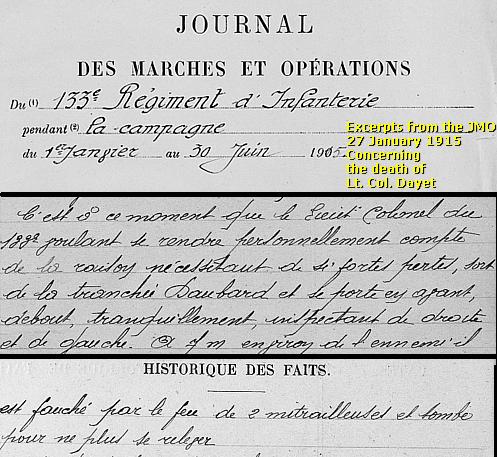
"It was in this moment, when the Lt.
Colonel of the 133rd, eager to inform himself personally of the cause
of such heavy losses, leaves the Trench of Daubard, stretches straight
up, quietly inspecting the right and the left flanks. At around 7 m.
from the enemy he is hit by the fire of two machine guns, and falls
without ever raising up again."
Again:
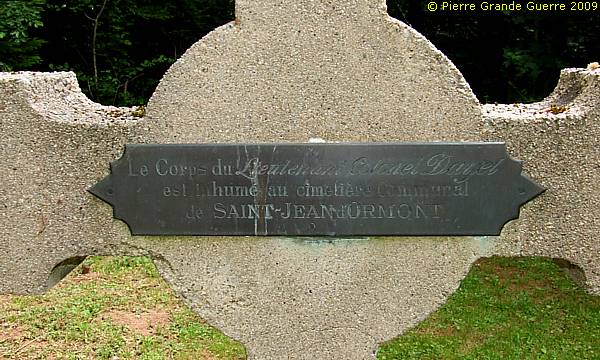
Another memorial stone at the foot of the Crucifix tells the fate of Capitaine Burelle:
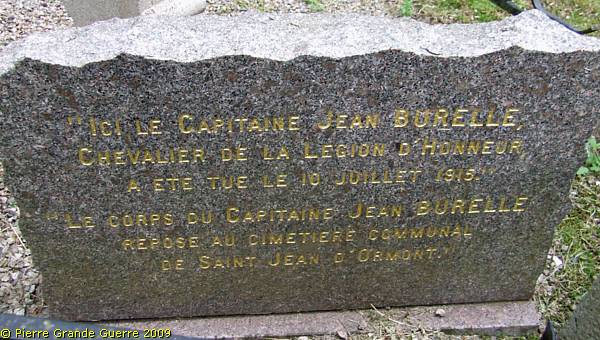
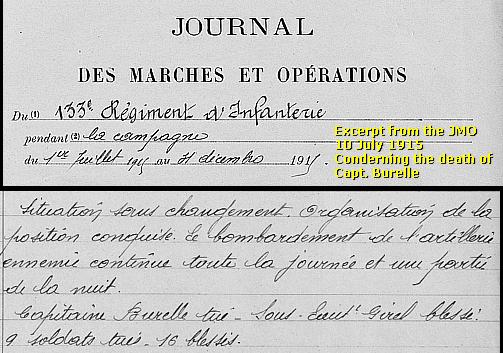
| "The situation has not changed. Organisation of the conquered position. The artillery bombardment of the enemy continues all daylong and a part of the night. Captain Burelle killed - Second Lieutenant Girel wounded. 9 Soldiers killed - 16 wounded." |
The entrance to the Nécropole Nationale de Ban de Sapt - "La Fontenelle"
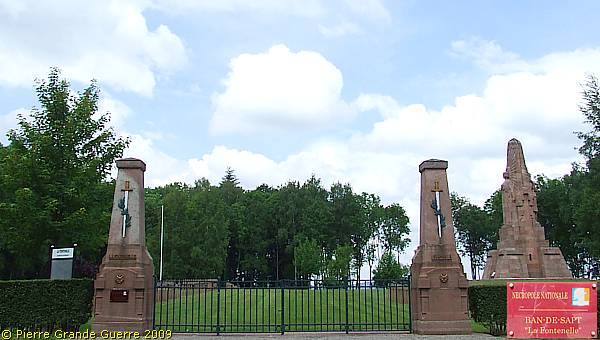
The Cemetery contains the graves of 1,384 soldiers.......
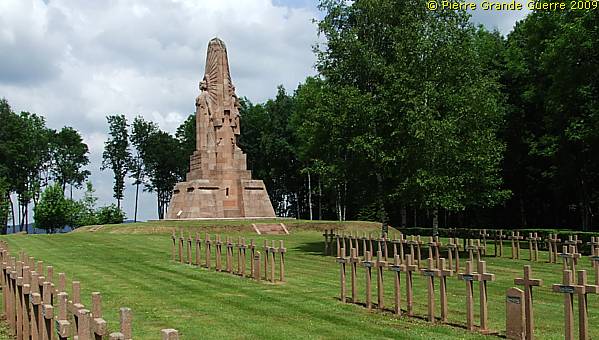
... representing all units, which were active in this front sector from 1914-1918.
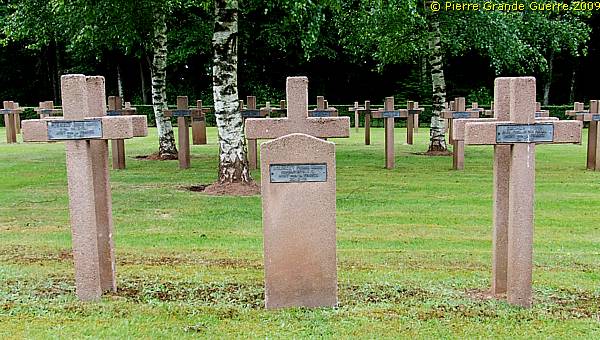
The cemetery also contains a mass grave, containing the human remains of 422 unknown soldiers.

The units of these soldiers are all named here.
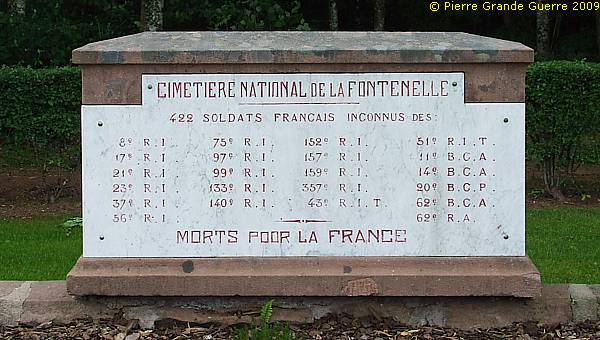
This corporal of the 6th Group of Chasseurs Cycliste with a common name in the Netherlands, seems to have had Dutch roots.
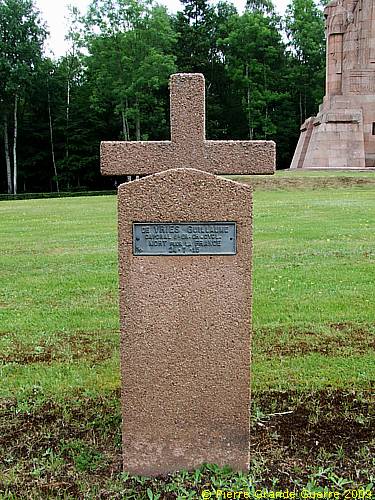
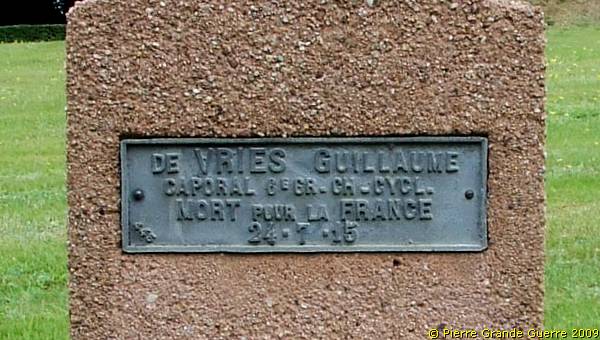
But I checked the last file of Guillaume (Willem) de Vries; his official death certificate. The corporal was born on 23 July 1891 in Paris, and thereby he was a genuine "Son of France".
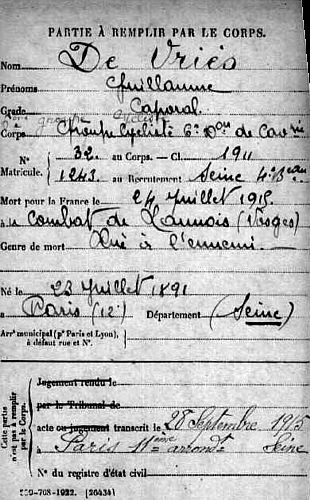
A huge memorial watches over the cemetery.
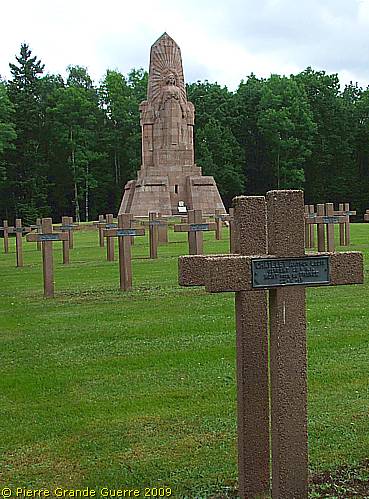
The sculptor, Antoine Sartorio (1885-1988), who fought as a soldier of the 363e R.I. in the Vosges, designed this memorial.
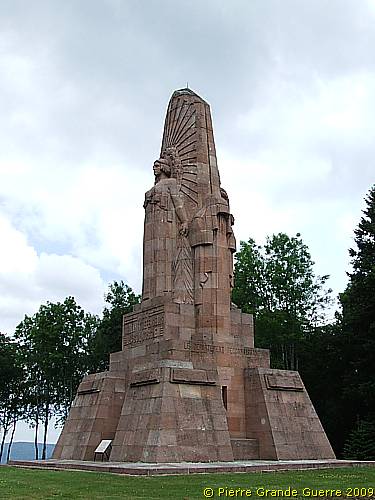
A sculpture representing "France", looking at the southwest, and at the rear side the sculpture of a French soldier. At the other two sides: empty images of phantoms.
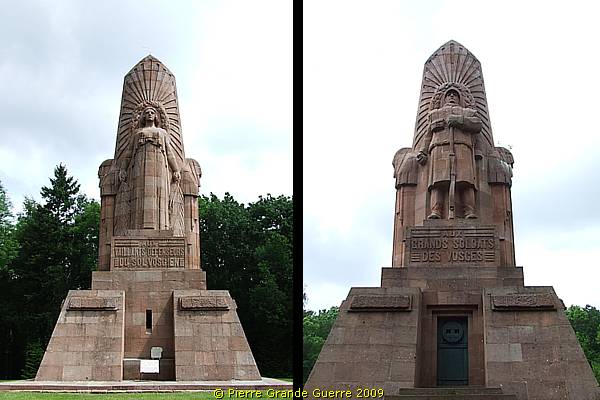
Old comrades in arms left some commemorative panels at the foot of "France".

At the edge of the cemetery and around it, you still can find traces of trenches.
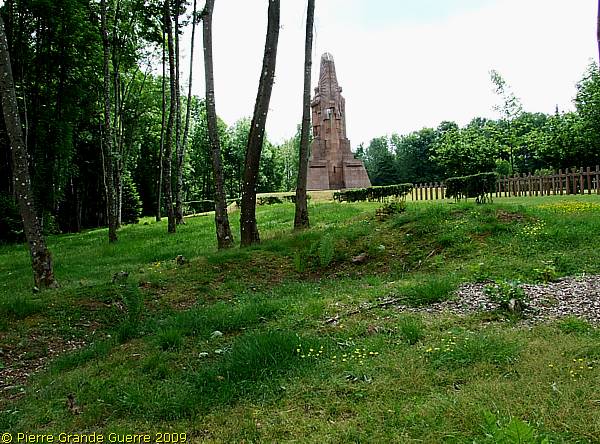
From this former trench you will get this panorama north-westward.

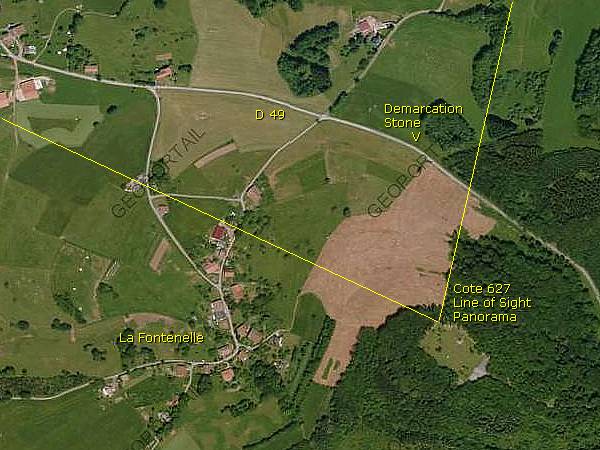
From left to right in 3 steps:
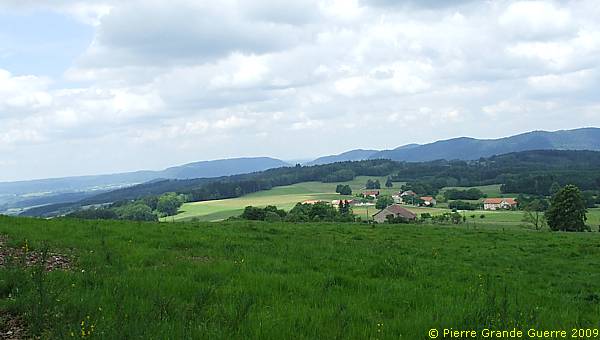
The village of Menil de Senones, right at the horizon. The road in the valley is the D 49.
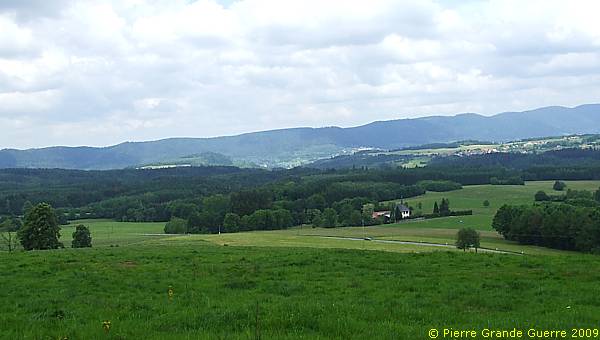
The mountain at the horizon, right, is the Côte d'Ortomont (894 m.)
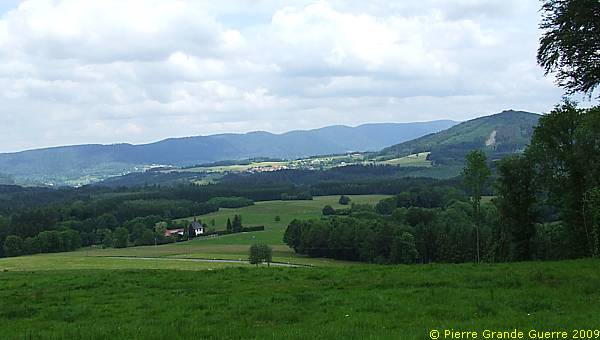
View from the area around Laitre southward to Côte 627.

We leave Côte 627 via the D 49 along this post-war demarcation stone, in front of the Bois de Laitre:

We make a jump south-westward, to the village of St. Jean d' Ormont , for a visit to the graves of Lt. Col. Dayet and Capt. Burelle.

On the communal cemetery in front of this XVth century church, ...
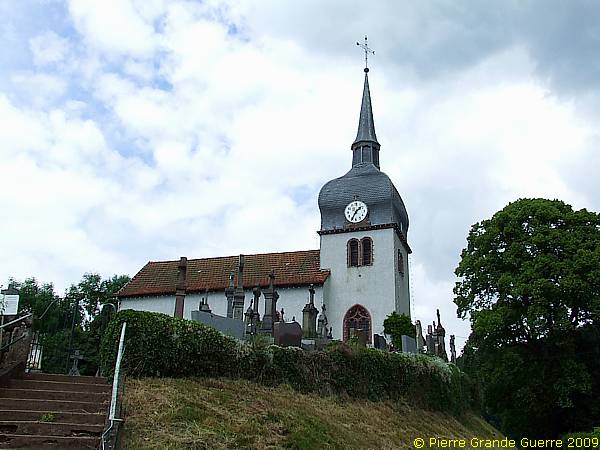
... we already detect a family grave, containing 4 war victims, two of them killed in 1914.
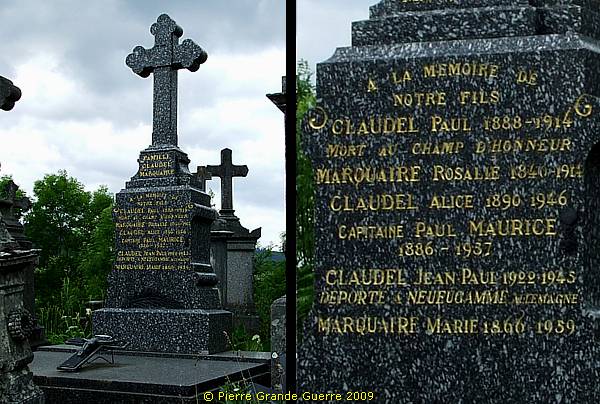
Behind the church lies a "Carré Militaire", a military plot, with a mass grave under this Crucifix.
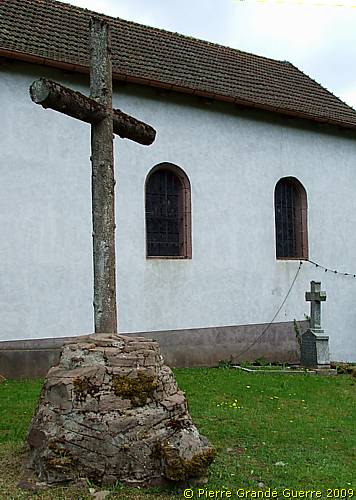
In the base of the crucifix we can read, that this military cemetery has been:
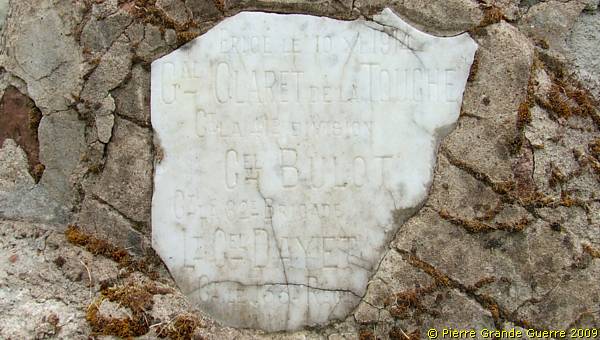
Also mentioned is Lt. Col. Sohier, commander of the 23e R.I., ...
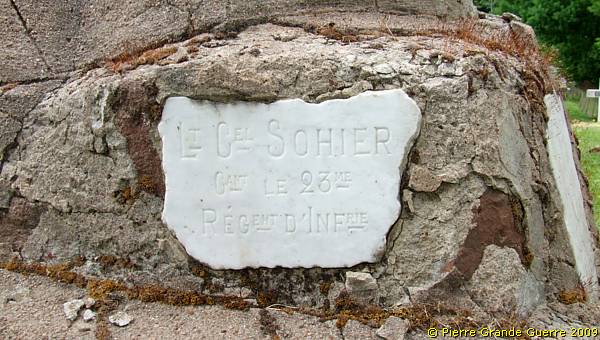
... and Lt. Col. Baudrand, the successor of Dayet, as commander of the 133e. R.I.
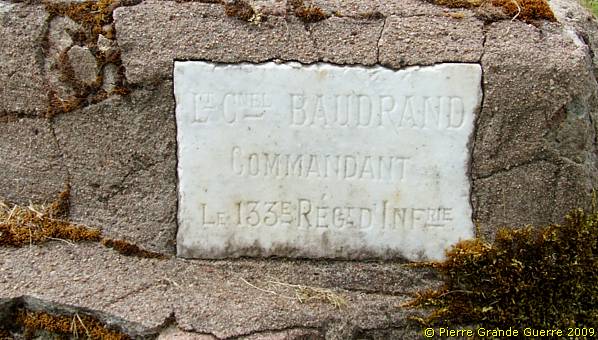
On the wall of the church hangs this plague.


In this mass grave rest also 10 German soldiers and a Feldwebel ( Sergeant Major ), killed in September 1914.
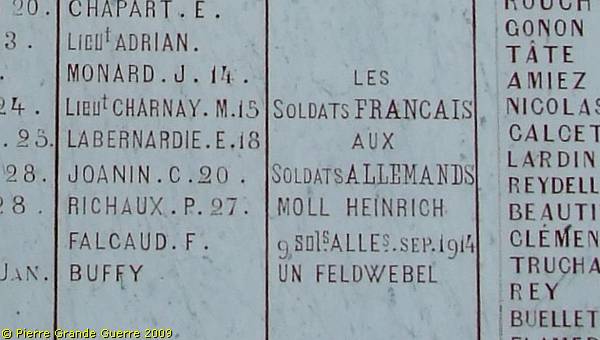
The mass grave also contains the human remains of an unknown American soldier (right).
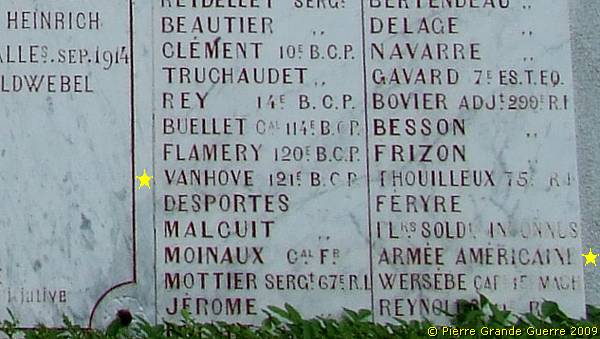
Opposite the wall, next to the mass grave, lies the grave of Lt. Colonel Dayet, overlooking the graves of 107 other soldiers.

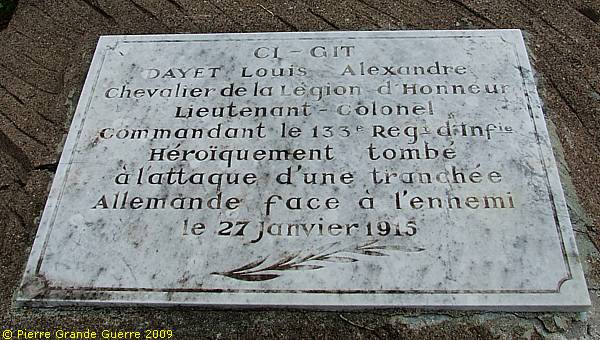
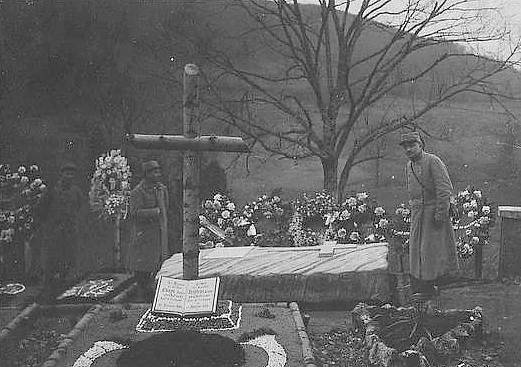
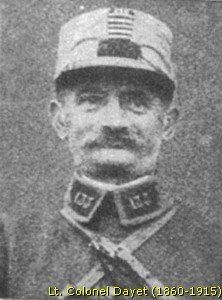
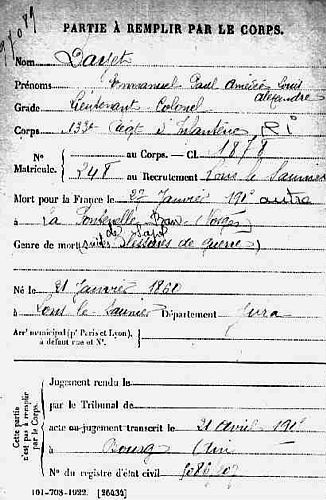
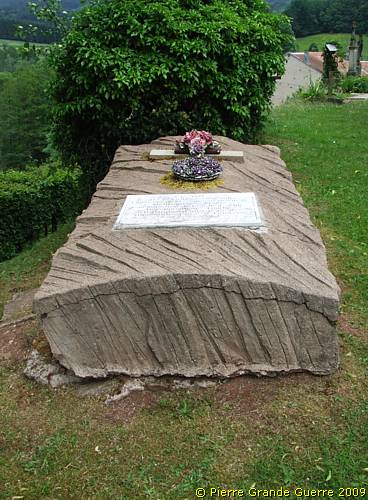
The grave of Captain Burelle.
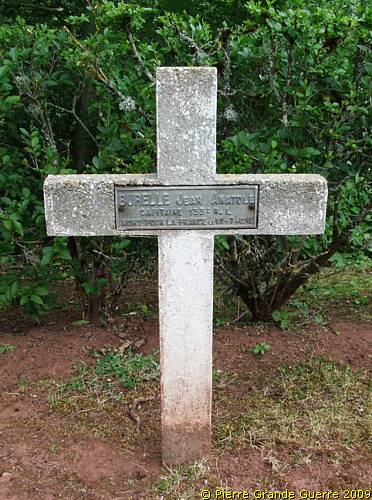
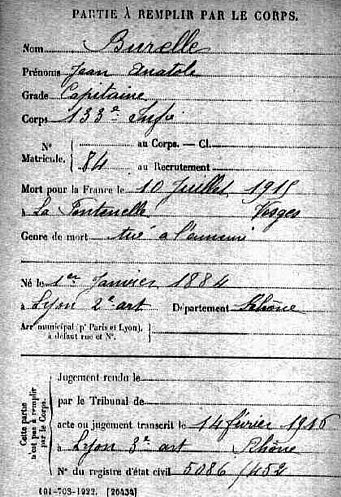
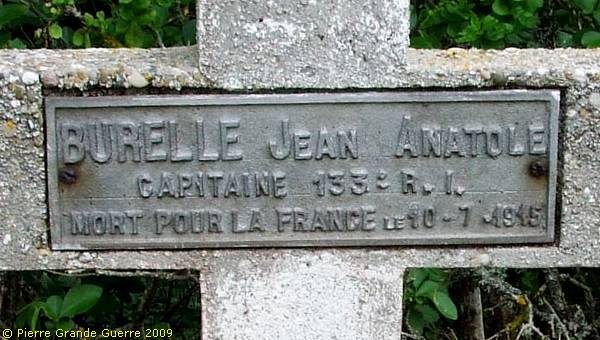
A grave for aspirant officer Paul Reguet.
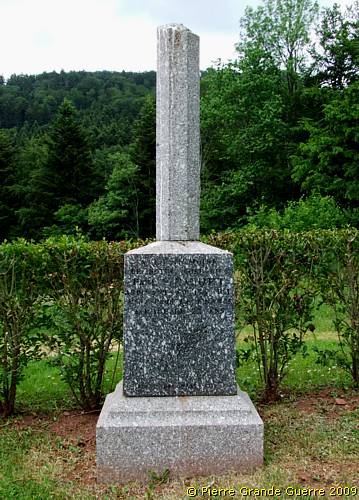
Two soldiers of the 23e R.I. share their grave.
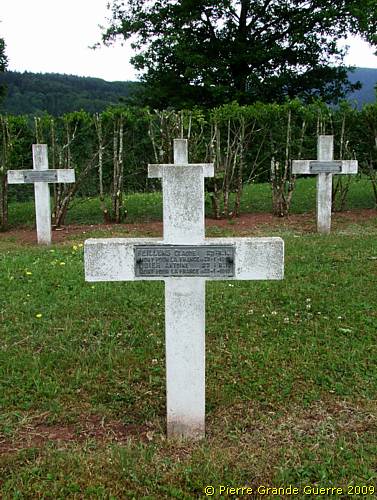
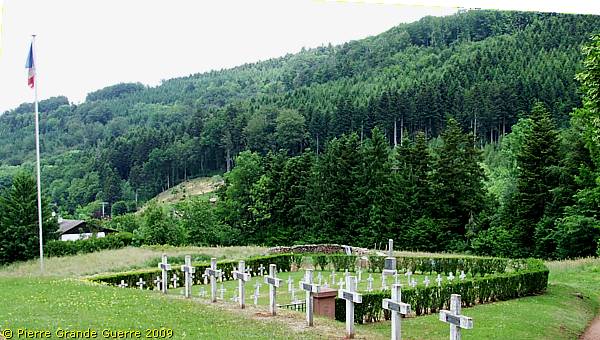
We leave the battlefield of Ban de Sapt with a last view from the area around Laitre at Côte 627.
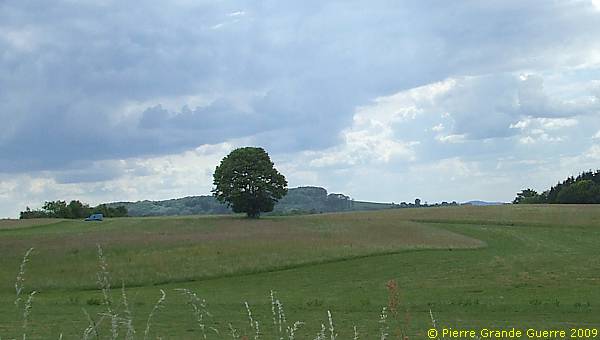
Continue northward to: " Senones - La Roche Mère Henry "
